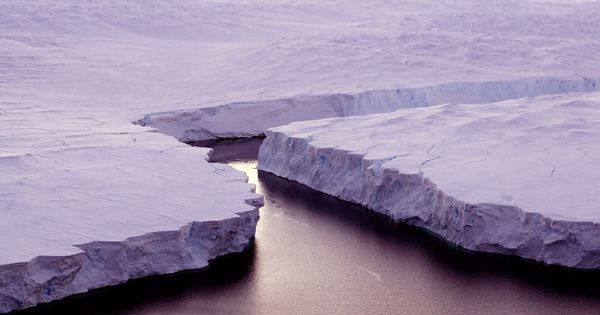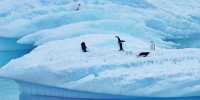Fossil beds may contain a lot of preserved information about what the country looked like all these years ago, but buried under the most neglected landscape on the planet. A study published in Earth and Planetary Science Letters has discovered the bed of a huge lake deep under the ice in Greenland that could be millions of years old.
There is a lot of potential data on past environmental conditions under the ice but access to its repositories is a difficult feat. The Greenland Ice Sheet is a massive body covering about 79 percent of Greenland, reaching a total depth of ~ 1,710,000 square kilometers (660,234 square miles) and 3.2 kilometers (2 miles) deep.
Scientists have identified the remains of an ancient lake stretching 7,100 square kilometers (2,741 square miles), Using modern radar technology, scientists can map what lies beneath the ice. Using radar, gravity, and magnetic data provided by NASA over and over Greenland. This type of sub-glacier feature was first discovered. Once large amounts of water have been drained from the surrounding basin, the lake dries up and is sealed with ice, leaving a 1.2-kilometer (0.7-mile) deep sediment.
According to the researchers, the ice-free conditions must last a long time for sediments to form in such an adequate way. Drilling to reach the silt for analysis can tell us more about the type of ice melting so long ago. Sediments like this can contain a variety of elements that can showcase data on climate and local fauna during our settlement.
In a statement, Guy Paxman, a post-doctoral researcher at Columbia University’s Lamont-Doherty Earth Observatory and lead author of the report, said, “If we could get those sediments, they could tell us when the ice was present or missing.
Researchers believe that it may be about 30 million years old, or even millions of years old, and maybe the result of repeated coverings and exposures due to different climatic conditions. Exactly how old the lake bed remains a mystery.
This is not the first time researchers have discovered geological formations beneath the ice. In 2019, 54 candidates were identified for subglacial lakes with large bodies of water trapped under ice in Greenland.
A new project is planned to be taken up soon, but it is in a separate area in the ancient lake which is significantly shallower.
The team is now hoping to enter the desert to find out what’s in the bed of the lake, but it won’t happen anytime soon not drilling deep into ice sheets is a huge undertaking, The last large ice core drilling in Greenland took place in the 1990s and has not been repeated since.
Climate change is a problem that affects every region of the world and collecting data on past trends is important for efforts to mitigate it going forward. Understanding the climate of the past can help us further understand how it may change in the future and how ice sheets may behave in the coming years.
Paxman said, “We’re working to try and understand how the Greenland ice sheet has behaved in the past. It’s important if we want to understand how it will behave in future decades.”















